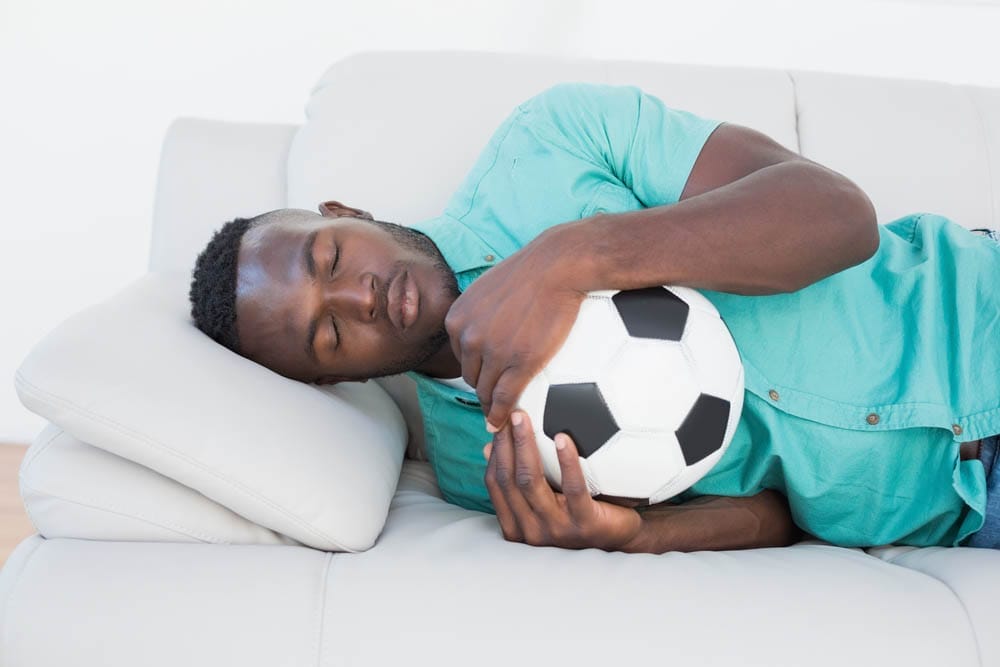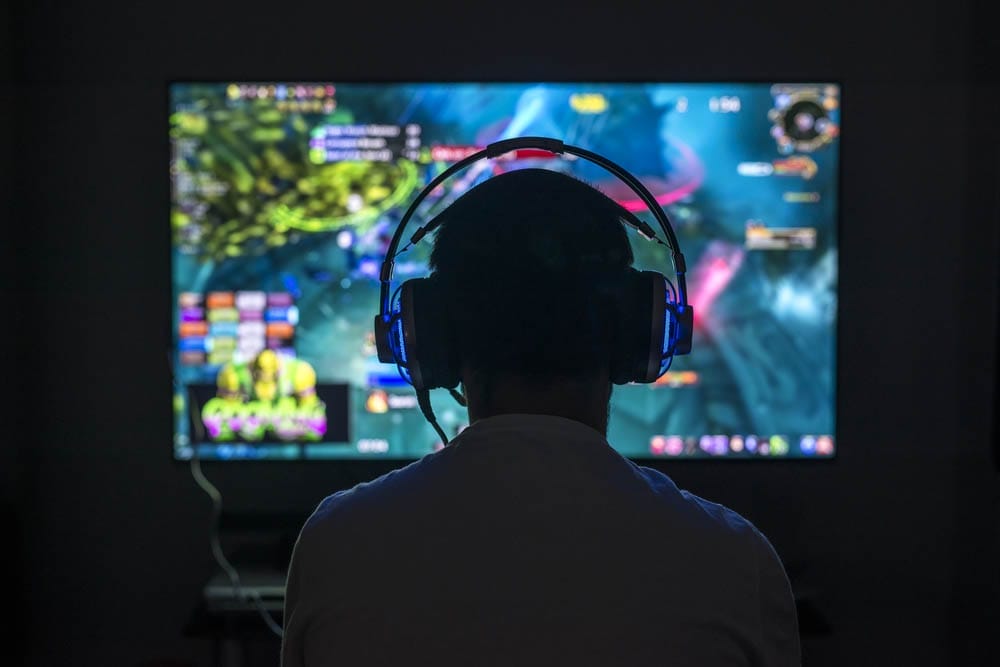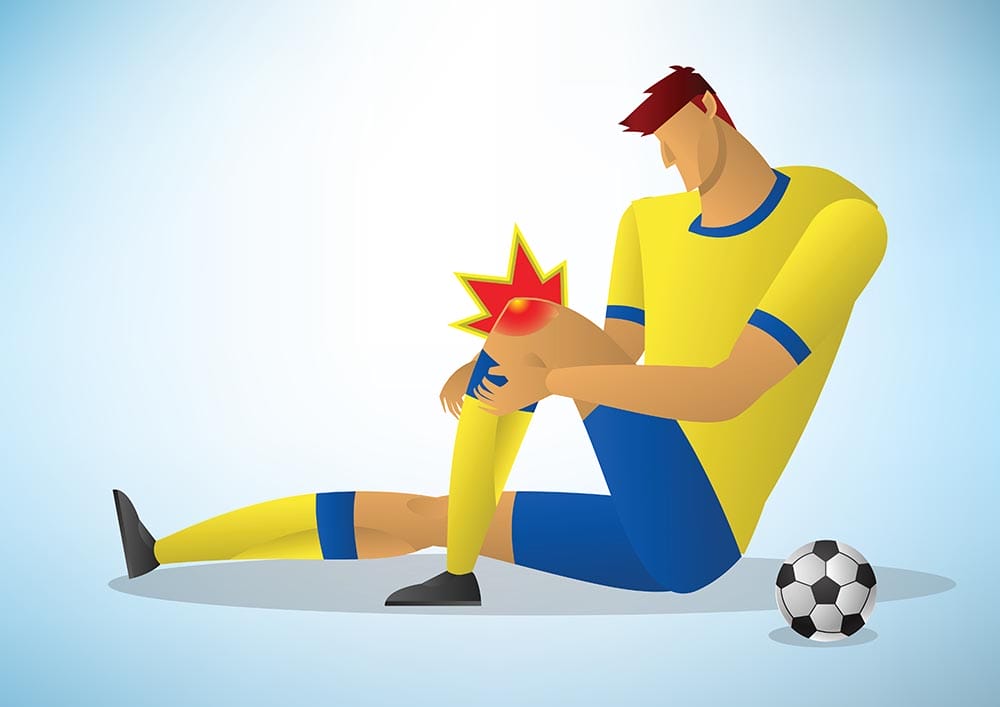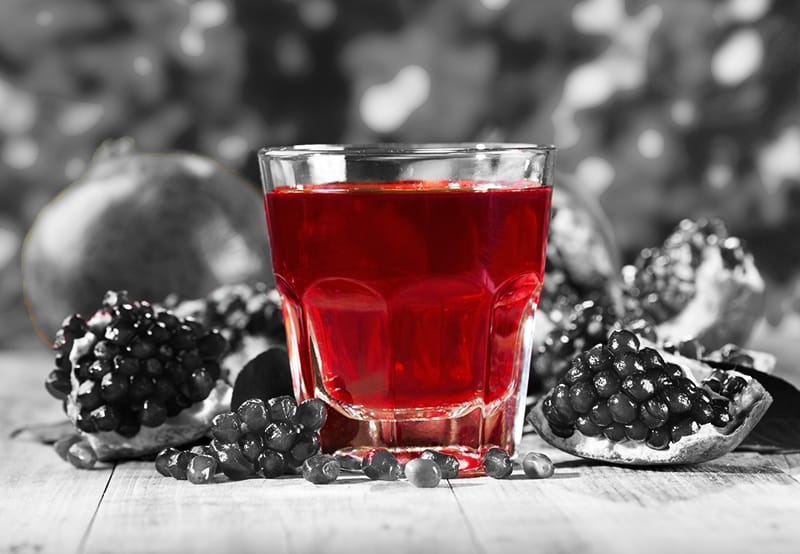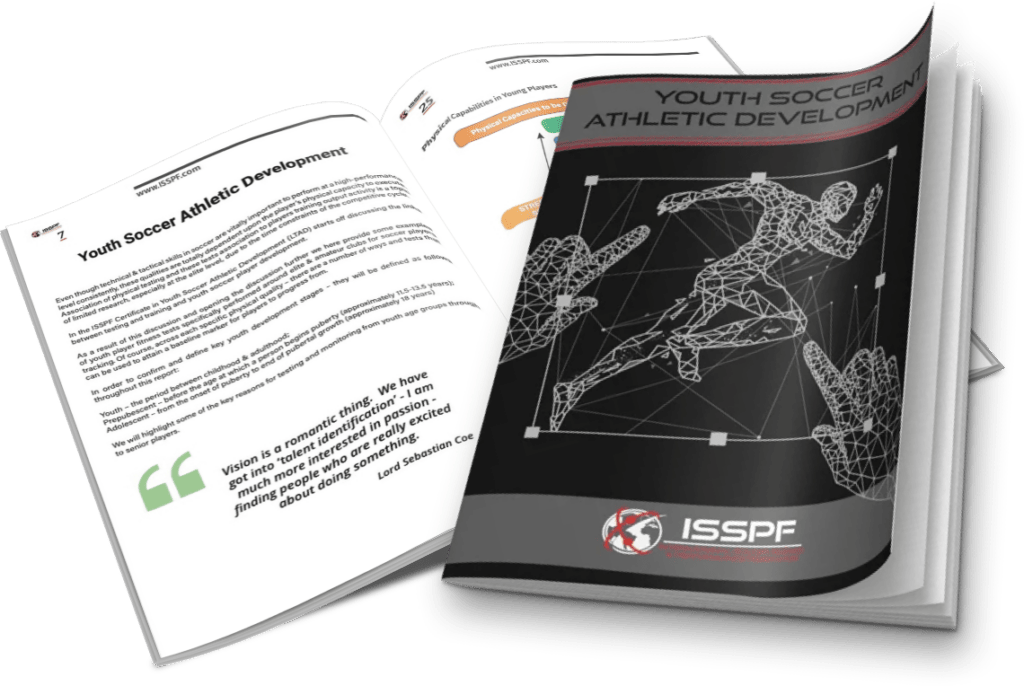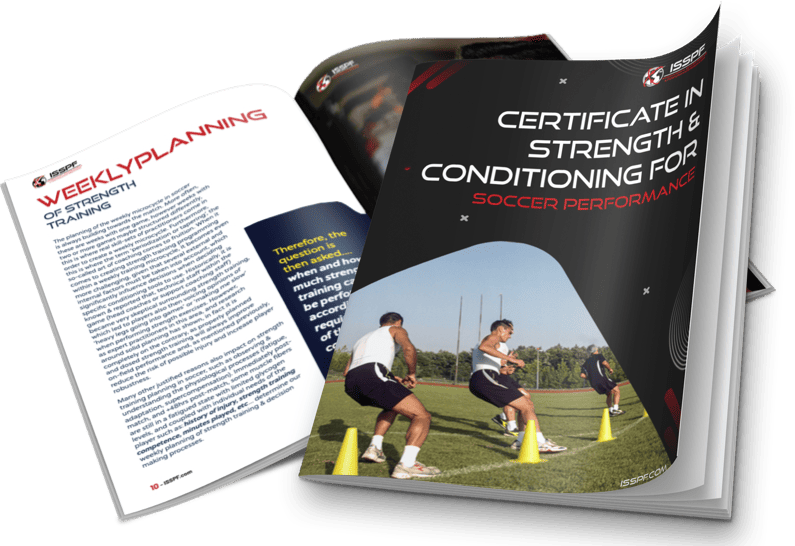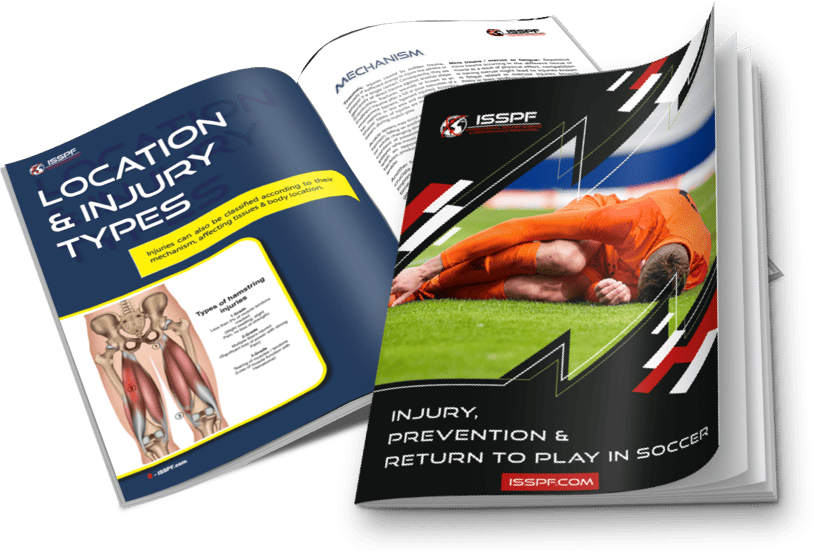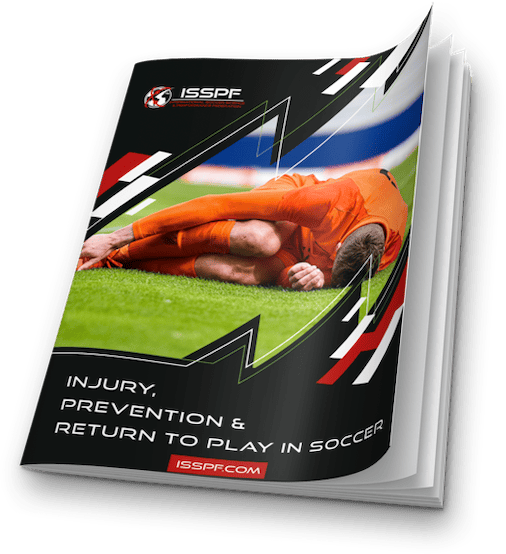Written by: Joshua Smith; MSc., PGDip, BSc (HONS) High Performance Manager
Previously we discussed one of the most underappreciated recovery tools available, sleep, with our focus being on how players can maximize sleep-ability; this involved discussing “sleep extension” and “sleep hygiene” (Table 1).
Within this particular article, we will discuss ‘barriers to sleep’ – as this key topic forms a fundamental part of player education whilst empowering them to further understand not only what they shouldn’t be doing before bed, but why?

Sleep is an incredibly valuable recovery tool that provides important psychological and physiological functions that are fundamental to the recovery process (Silva et al., 2021).
Unfortunately, whilst athletes rate sleep as their most valuable recovery tool (Fullagar et al., 2015), most of them are unaware of the various barriers to sleep and how they might be affecting their own sleep and thus recovery, in a negative manner.
Sleep duration (total sleep), quality and phase have been noted by Fullagar and colleagues (2015) as the 3 key factors associated with the recuperative outcome of sleep (Figure 1). In knowing what the 3 pillars of sleep recovery are, we will now explore the barriers to them.
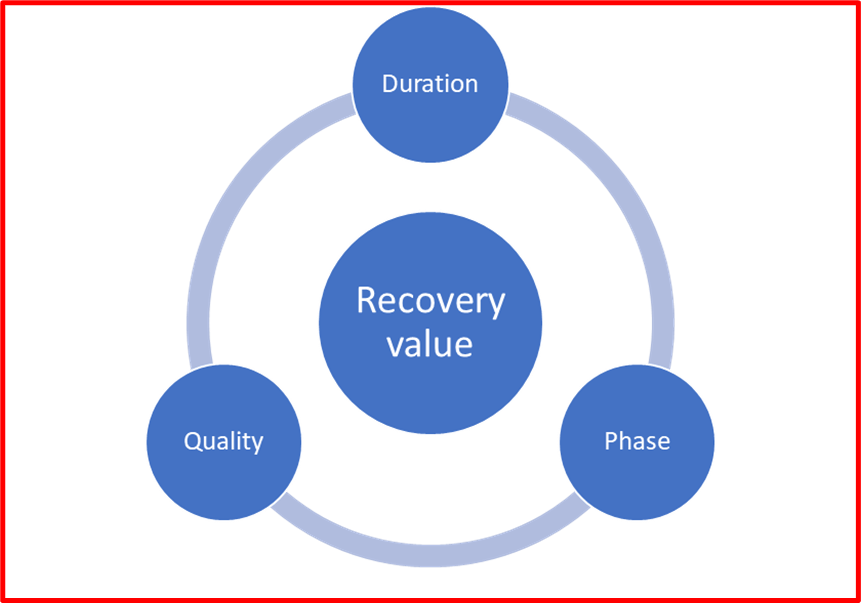
Late Nights, Alcohol and Gaming
It has been found by multiple authors that sleep duration was significantly affected by night games versus non-night game fixtures, as well as after late training sessions (Eagles et al., 2014; Fowler et al., 2014; Juliff et al., 2015).
To add context to this, it was found by Skein and colleagues (2013) that sleep deprivation negatively affected recovery, as well as reduced countermovement jump height and cognition reaction time – both measures that are important in football performance.
Now, the question can be asked, how can a performance staff work around late-night fixtures and ensure player recovery isn’t negatively affected? One such tool that I have used, beyond reinforcing good sleep hygiene (Figure 2), is the distribution of vitamins to players following the post-match meal.
A recent review by Arab et al., (2022) found, “an association between magnesium status and sleep quality, according to the observational studies, while the randomized clinical trials showed an uncertain association between magnesium supplementation and sleep disorders.”
Further to this, calcium and Vitamin D have also been found to support sleep onset, with Grandner and colleagues (2013) noting that, “Calcium intake was associated with decreased difficulty falling asleep and non-restorative sleep.”, and, Muscogiuri et al (2019) reporting that “Low levels of vitamin D are correlated with poor quality sleep and short sleep duration, Vitamin D receptors have been found in the brain regions involved in sleep regulation, and that, Vitamin D regulates the sleep–wake cycle.”
Speaking from an anecdotal perspective, I have utilized different combinations of these with players (under consultation with the team sports physician) to assist players in sleep onset.
Should this be an avenue that staff or players do not want to explore, it is important to address the night fixture problem with appropriate scheduling, for example, delaying training or recovery sessions the day after a late-night fixture, and ensuring that travel arrangements the day following late-night fixtures (for away games) prioritize sleep versus early departure times.
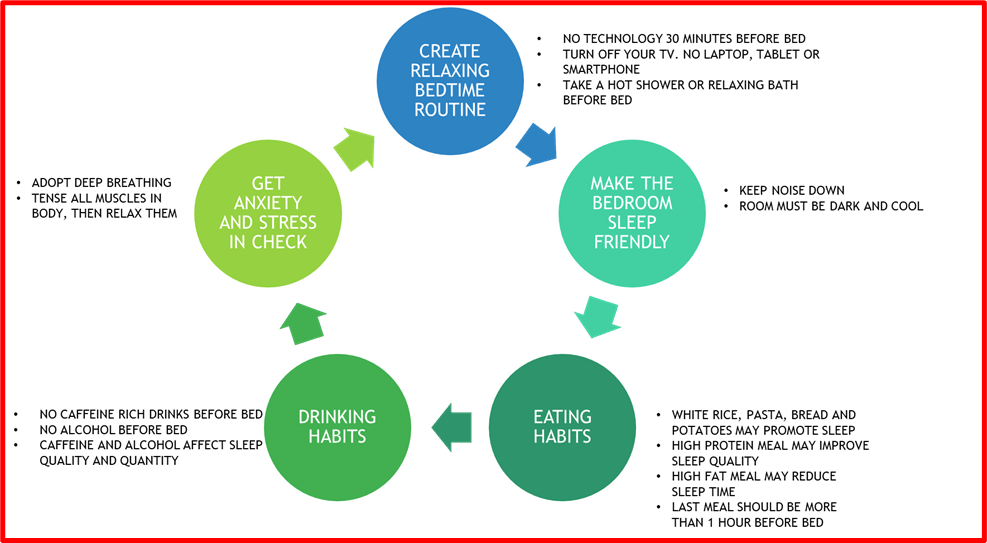
Moving from late-night fixtures and their affect on sleep, we will now focus on alcohol use and abuse and how this interrupts player recovery – often sleep deprivation and alcohol use will go hand in hand.
Firstly, alcohol affects sleep, daytime alertness, and physiological functioning during sleep; with it being reported that there is a suppression of rapid eye movement (REM) sleep in the first half of the sleep period (Roehrs and Roth, 2001).
To briefly explain what REM is, it falls into the 3rd pillar of sleep factors, “phase”, and plays a critical role in memory, healthy brain development, and recovery (Suresh, Shankar and Dayanand, 2021).
Barnes (2014) notes in detail that, “the impact alcohol has on recovery and sports performance is complicated and depends on many factors, including the timing of alcohol consumption postexercise, recovery time required before recommencing training/competition, injury status and dose of alcohol being consumed.”
In discussing the timing of alcohol consumption, it is noted that in some instances players will consume alcohol directly after training or fixtures instead of carbohydrates to maximize glycogen stores.
Additionally, this also affects rehydration status, as alcohol has a diuretic effect and increases urinary output – therefore having a negative affect on the restoration of fluid balance post-exercise (Barnes, 2014).
Finally, we will cover screen exposure pre-sleep and how this may have an affect on sleep. Pham and colleagues (2021) found that, “electronic device use near bedtime more than 30 min was significantly associated with poorer sleep quality.”
This is reinforced by Exelmans (2019) that concludes that, “Procrastinatory television viewing and binge viewing have been related to worse sleep quality by increasing levels of perceived stress and pre-sleep cognitive arousal, respectively”.
If we zoom in more specifically on gaming consoles, it should be noted that gaming volume is negatively related to the overall sleep quality of adults (Exelmans and Van den Bulck, 2014). This is supported by Lam (2014), where is was found that problematic Internet use (for online gaming) was associated with sleep problems including subjective insomnia and poor sleep quality.
Conclusion
In starting the article this month, the 3 key pillars of sleep recovery were noted, being namely, sleep duration, sleep quality and sleep phase. We have touched on three items that players may engage in on a regular basis and that will influence these pillars and their recovery.
It is crucial that players are educated on the various negative effects associated with sleep deprivation, alcohol consumption post-exercise, and screen exposure to ensure that their recovery status is not affected and therefore, their ability to perform.
If you are interested and would like to take the next step in your soccer science career, take a look at the courses offered by our Official Education Partner, the International Soccer Science and Performance Federation at www.ISSPF.com
What Now?
Here at ISSPF we are offering people the opportunity to stay ahead of the game by becoming a real student of the game to ensure players across all levels are exposed to the best practice in terms of coaching content, fitness, technical development, tactical analysis, soccer science & nutrition, strength & conditioning techniques & injury reduction strategies that will assist to enhance performance of individuals and collectively teams.
Not only are we keeping things simple for individuals who are keen to progress in their own area of development within team sport and soccer, but we are enhancing the capability to self-develop through our unique faculty of staff and elite practitioners to bring key messages and expert advice to the comfort of your own preferred learning environment.
Travelling to and from games, training, at home, in the office….. we have a fully functioning educational and self-developing continual professional development strategy ready to work with you through our online coaching courses…..
TAKE THE ONLINE SPORT SCIENCE & FOOTBALL COURSE
The demand for sports science, tactical analysts, physiotherapists, and performance & coaching specialists in football & team sports is growing year upon year. Thousands of learners at home, university students leaving university with a sport science degree, physio or therapy related qualification, however many of them asking the key question. What now?
- How do I get a job in football?
- What’s the next step?
- Which area of sport or football science & medicine do I want to specialise in?
This is certainly an interesting question as progressing from completing a sporting, medical or therapy-related degree to then working in professional football & trying to understand all the key components, and soft skills that come with jobs in football or careers within sport is complex.
As a result, the bespoke courses developed by ISSPF Elite Football Coaching & Sport Science, Kinesiology, Athletic Trainers & Physiotherapist Faculty members are a way of further exposing learners, parents, professional coaches, students, or other individuals interested in football science with a thirst to develop & upskill further.
The link below will take you to the hugely popular & expertly designed ISSPF endorsed & University & Football Association accredited Soccer Science & Performance online sport science course, where you will be exposed to football or soccer science with coaching-led research, and practical examples used by the game’s leading practitioners.
Soccer Science & Performance Online Sport Science Course
Why Is This Course Important?
- Provides justification for the guiding of specific training methods, interventions & decision-making processes within soccer.
- Highlights the practical application of modern, research-based training methods & assessment tools.
- Provides increased evidence & knowledge to understand key kinesiology, soccer science & performance processes across a range of coaching science topics.
- Discusses the most efficient training methods and detailed insights into developing player fitness alongside rehabilitation & training methodologies.
- Learn from industry experts in the area of soccer or football science, kinesiology, sport science & performance training in team sports.
- Help maximise your decision-making through a better understanding & appreciation of football or soccer science.
Who is This Course For?
- Individuals tasked with the responsibility for the training, preparation & coaching aspects of soccer players or team sports.
- Kinesiologists, sport scientists, athletic trainers, coaches & fitness trainers.
- Individuals with an interest in developing their knowledge in the training & development of individual soccer players or team sports.
What Does This Course Cover?
Outline of the Soccer Science & Performance Course:
Module 1: The demands of professional soccer: Physiological costs of the game
Lecturer: Dr. Vasilis Kalapthorakos (Greece)
Topic: Physiology
Module 2: Developing Resilience in Soccer: Mental Skill Development
Lecturer: Nikki Crawley (England)
Topic: Psychology
Module 3: Game model building & development: Reinterpreting Tactical Periodisation
Lecturer: Dr. Alejandro Romero-Caballero (Spain)
Topic: Training Methodology
Module 4: Injury reduction strategies in professional soccer
Lecturer: Dr. Patrick Orme (England)
Topic: Injury Prevention
Module 5: Leadership and Culture for High Performance Soccer
Lecturer: Maximillian Lankheit (Germany)
Topic: Psychology
Module 6: Current trends in leading European soccer teams: In-Possession
Lecturer: Chris Meek (England)
Topic: Performance Analysis
Module 7: Soccer nutrition & the role of the nutritionist
Lecturer: Matthew Jones (England)
Topic: Nutrition
Module 8: Competitive soccer training microcycle: Structure & justification
Lecturer: Dr. Manuel Segovia (Spain)
Topic: Training Methodology
What is Football Science & Performance?
- Football coaches, football scientists & research-driven practitioners combine soccer-related studies & findings together to maximise their working & coaching efficiency.
- Bringing together some of the latest scientific principles, knowledge & practical applications surrounding performance within a soccer-specific environment.
- The integration of research-driven & coaching principles that enable key individuals within the game to maximise the performance of players.
Share this article:
